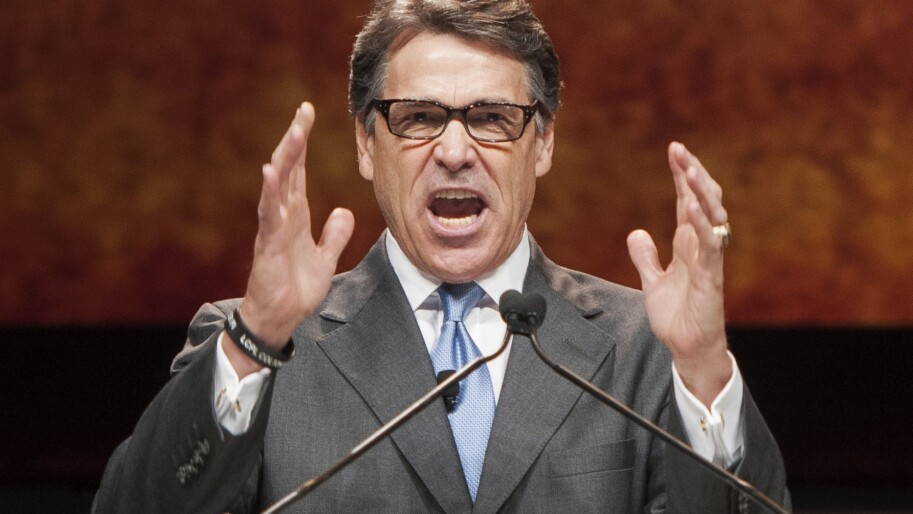The below article by John H. Cushman Jr. of Inside Climate News re-asserts the importance of peer review in the scientific process. We all know that Rick Perry, “is not a climate scientist,” nor is anyone else in the Trump Administration. In light of that, perhaps they can leave decisions pertaining to climate science to the scientists themselves, who are subject to peer review.
Two new studies published this month are helping resolve lingering differences between what climate models have predicted and what actual measurements have recorded. In doing so, they undermine two of the timeworn arguments used by those who question the prevailing scientific consensus on global warming.
One study, released today, took a fresh look at the vexing question of how sensitive global temperatures will be to the buildup of carbon dioxide around the earth. It reaffirmed the basic understanding that any doubling of atmospheric concentrations of greenhouse gases will result in significant planetary warming.
The other paper reexamined satellite observations of one layer of the atmosphere and showed that the space-based warming data does not collide, as dissenters frequently contend, with temperature measurements taken at the surface of the Earth. Instead, the satellite data shows a much more intense warming than before.
Both studies address uncertainties that are raised again and again by people who seize on them to suggest that not enough is known to justify aggressive action to control emissions of greenhouse gases.
But whether the question is climate sensitivity or the data collected by satellites or some other aspect of the science, the world’s governments have mostly recognized that the risks of climate change are clear enough to validate policies like those enshrined in the Paris climate agreement, which seeks to limit warming to well under 2 degrees Celsius by sharply reducing emissions.
Both studies were published in highly regarded peer-reviewed journals and have been in the works for a long time. They aren’t knee-jerk reactions to an intense political debate, but they could prove influential as the back-and-forth continues.
Above all, both studies serve as examples of how peer-reviewed research remains the key to sound climate policies.
By chance, they appeared just as two of President Trump’s cabinet members, EPA Administrator Scott Pruitt and Secretary of Energy Rick Perry, have been calling for a renewed debate over climate science under the guise of a red-team, blue-team adversarial showdown.
Many science and public policy experts say the proper forum for reasoned discussion is in established, authoritative institutions like the Intergovernmental Panel on Climate Change (IPCC) or the National Academy of Sciences and in the peer-reviewed literature where the fine details of science face rigorous review from other scientists with expertise in the area.
As one scientist, Benjamin Santer of the Lawrence Livermore National Laboratory, said in explaining peer-review in an online commentary in the Washington Post: “Your peers are your fiercest critics. They are constantly kicking the tires. ”
Sen. Al Franken (D-Minn.) chided Perry at a hearing last week for suggesting that the consensus was somehow imbalanced and needed to be challenged all over again, regardless of the existing rigors of peer review.
“That’s exactly how science works, including climate science,” Franken said. “That’s the scientific process.”
How much warming to expect?
It’s that peer-review process that led to the article published today in the journal Science Advances, the latest of many recalibrations of what climate scientists call “equilibrium climate sensitivity.”
The term is defined as the amount of temperature increase to be expected from any doubling of carbon dioxide concentrations in the atmosphere. The expected range of warming has often been revised, without ever being narrowed very much. In other words, this crucial factor of climate science remains somewhat uncertain.
In its most recent comprehensive review of the climate consensus, the IPCC—an international body that draws on the research of thousands of scientists—updated the estimated range of climate sensitivity, recognizing that there was little consensus between various computer models and historical observations. The IPCC set the expected range at 1.5 degrees to 4.5 degrees. While the midpoint had changed little from earlier reports, climate skeptics seized on the new low boundary as a sign that the ultimate amount of warming the Earth faces might well be lower than generally expected.
Scientists at Harvard University, recognizing that the planet’s temperature dynamics are complex and include both faster and slower mechanisms of warming, did a new analysis paying special attention to slow modes of warming that take a century or more to play out. These kinds of warming may not yet be showing up in temperature observations, but that doesn’t mean they aren’t on their way, they wrote.
Their accounting, spelled out in a complex statistical presentation, brings the historical temperature records into alignment with what models predict—once again undermining a favorite argument of the skeptics.
What about the satellite data?
Similarly, the recalibration of the satellite data looked more carefully at the nitty gritty details and found that the risks of warming probably haven’t been exaggerated.
Skeptics often cite the satellite record of temperatures in the troposphere as if it contradicts the prevailing view of warming.
The new analysis, published in the Journal of Climate showed not just a big jump in warming of the lower part of Earth’s atmosphere, but a marked acceleration. The reason: scientists corrected for the drift of satellite orbits and other factors that had distorted the observations from space.
“Climate skeptics have long claimed that satellite data shows global warming to be less pronounced than observational data collected on the Earth’s surface,” explained CarbonBrief. “This new correction to the RSS data substantially undermines that argument.”


